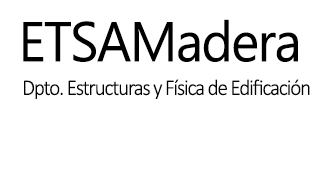
Abstract
The constitutive models used for wood and timber have been formulated in different scales. The term clear wood corresponds with the macroscopic scale, where the orthotropic elastic model is commonly used. That model, typically applied to local modeling (e.g. connections), is defined by a compliance matrix composed of nine parameters, being uncoupled elongations and angular distortions. The current experimental standard methods for obtaining those nine parameters are time consuming, as different specimen configurations and a careful preparation for a specific grain orientation are needed. The optical digital measurements (ODM) are changing and improving those traditional procedures. For the specific case of clear wood, they have the additional advantage of properly link the experimental data with the assumed theoretical macro scale model. This work presents a new and simple procedure for determining the compliance matrix of clear wood using just one specimen with an arbitrary orientation of the grain. The experimental configuration requires a rectangular prism, uniaxial load set up, and 3D ODM. The method was initially validated using ARAMIS® 3D, with 5 Mg pixels, on ash (Fraxinus excelsior L). Reasonable results, according the used resolution, were obtained; even though a higher resolution is needed for getting a proper accuracy.

